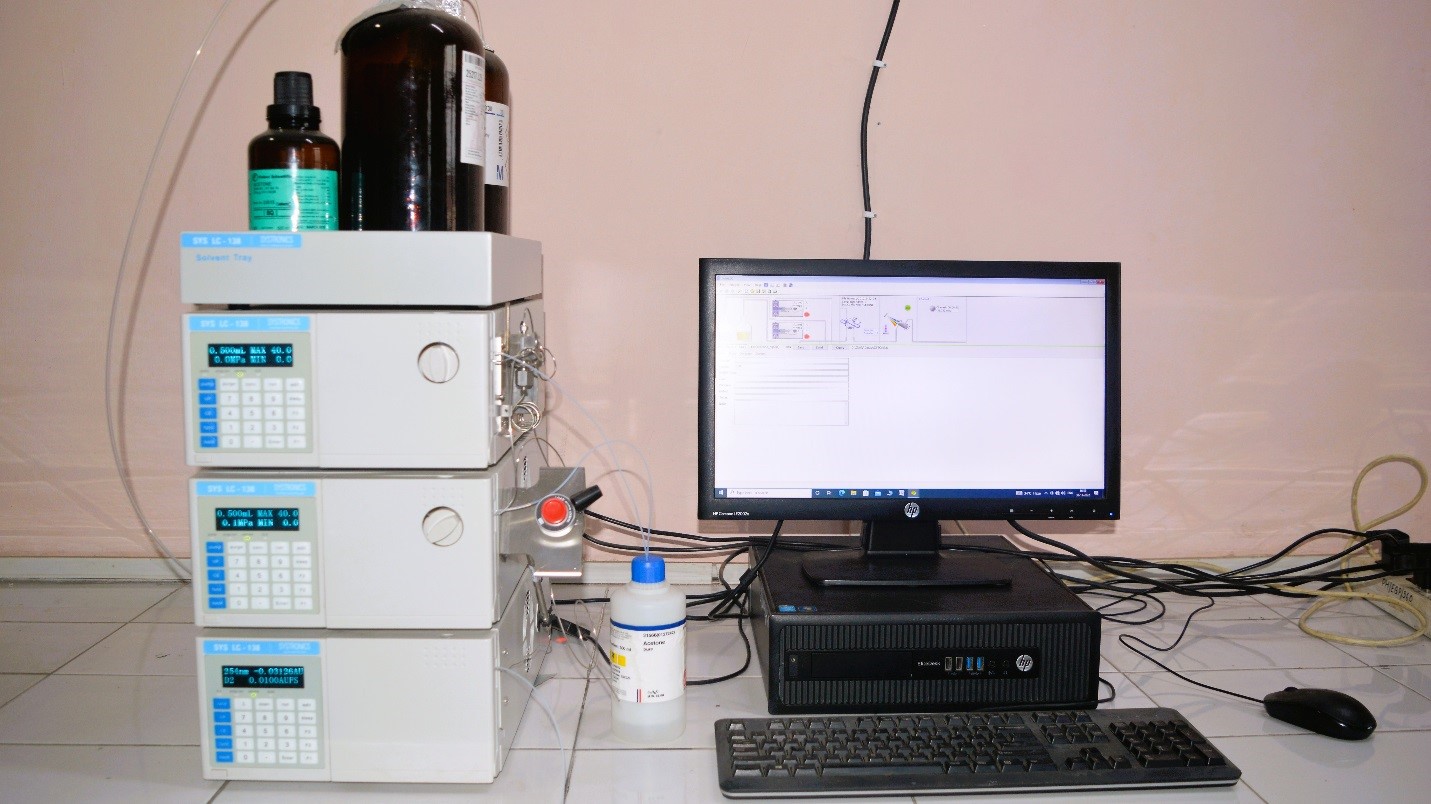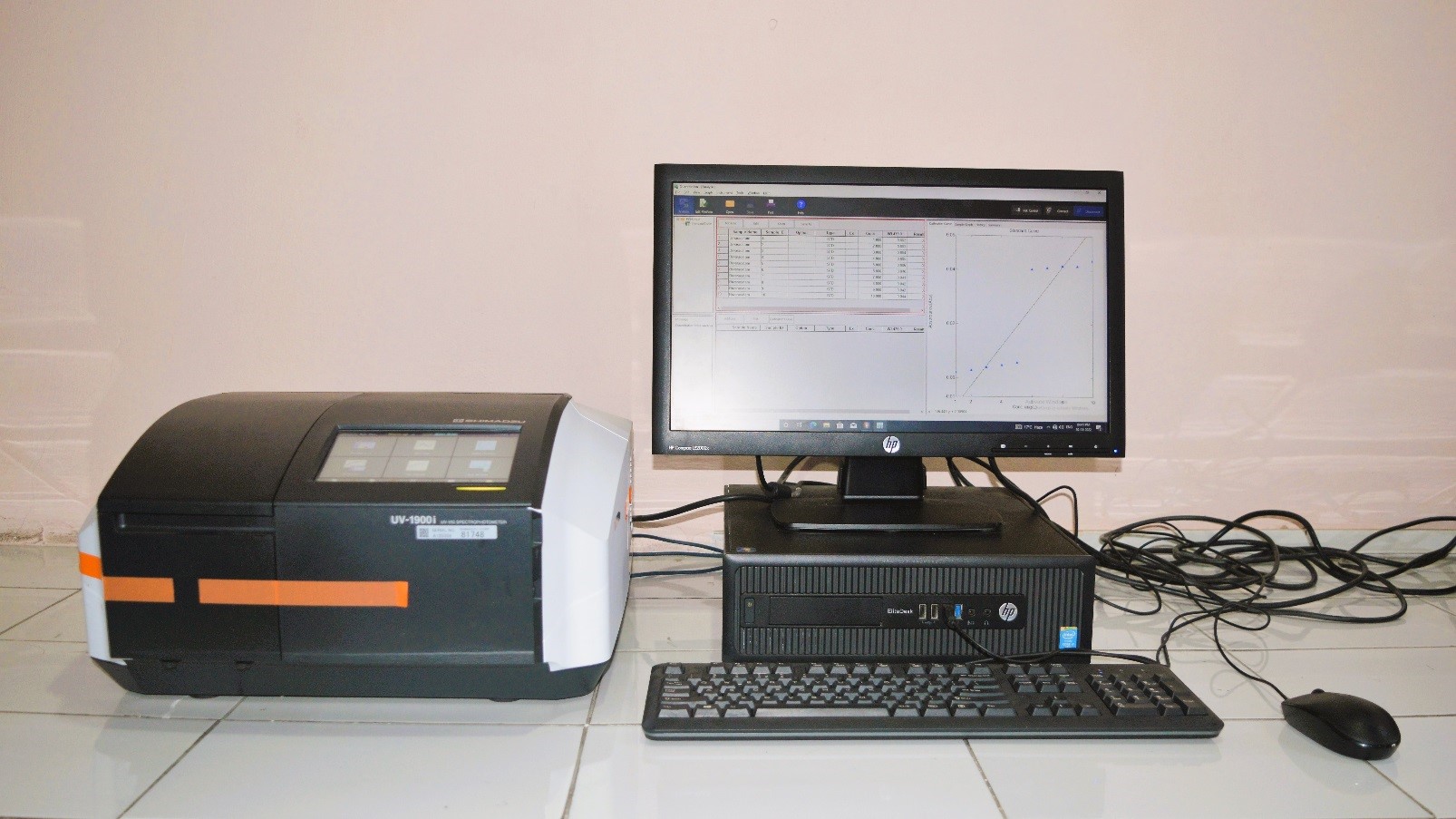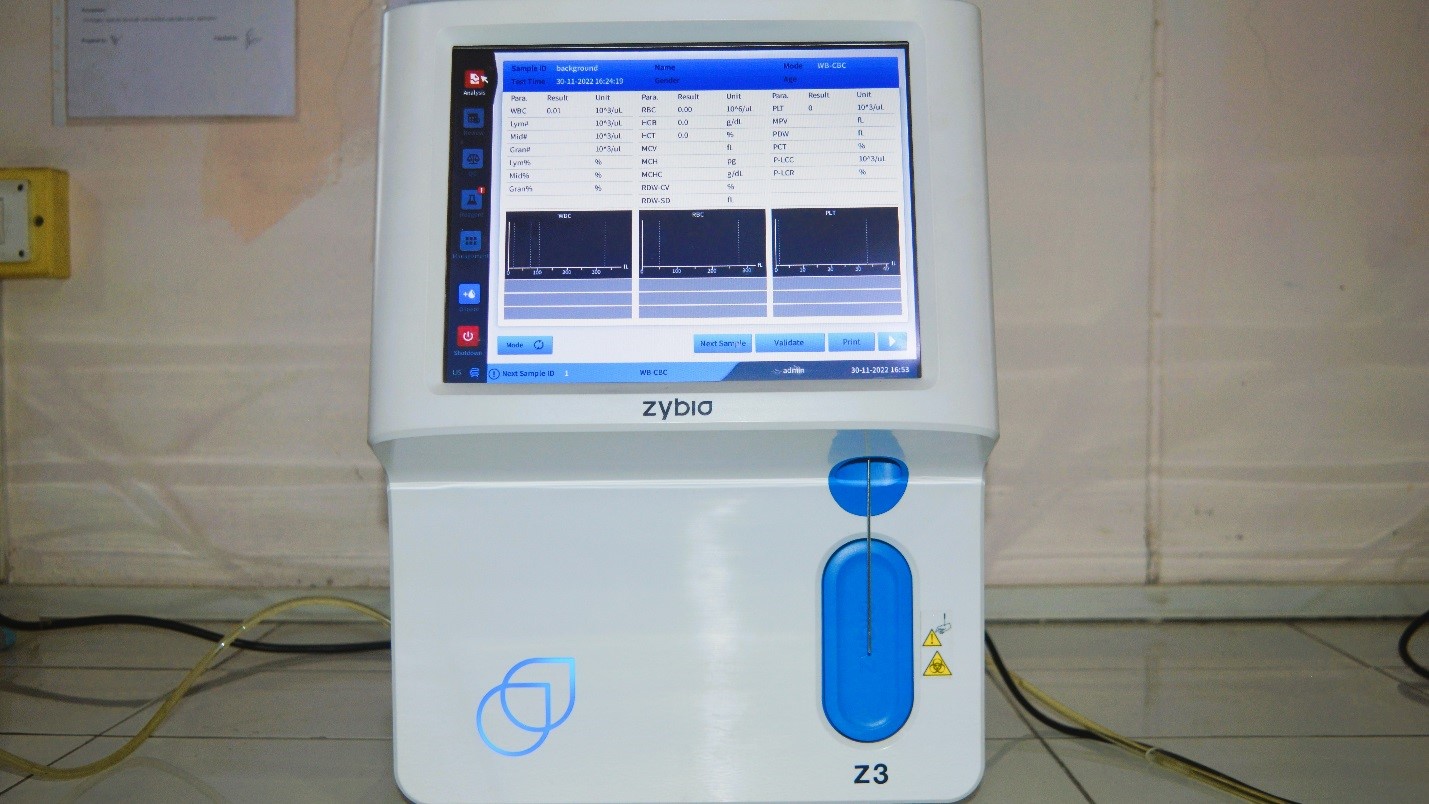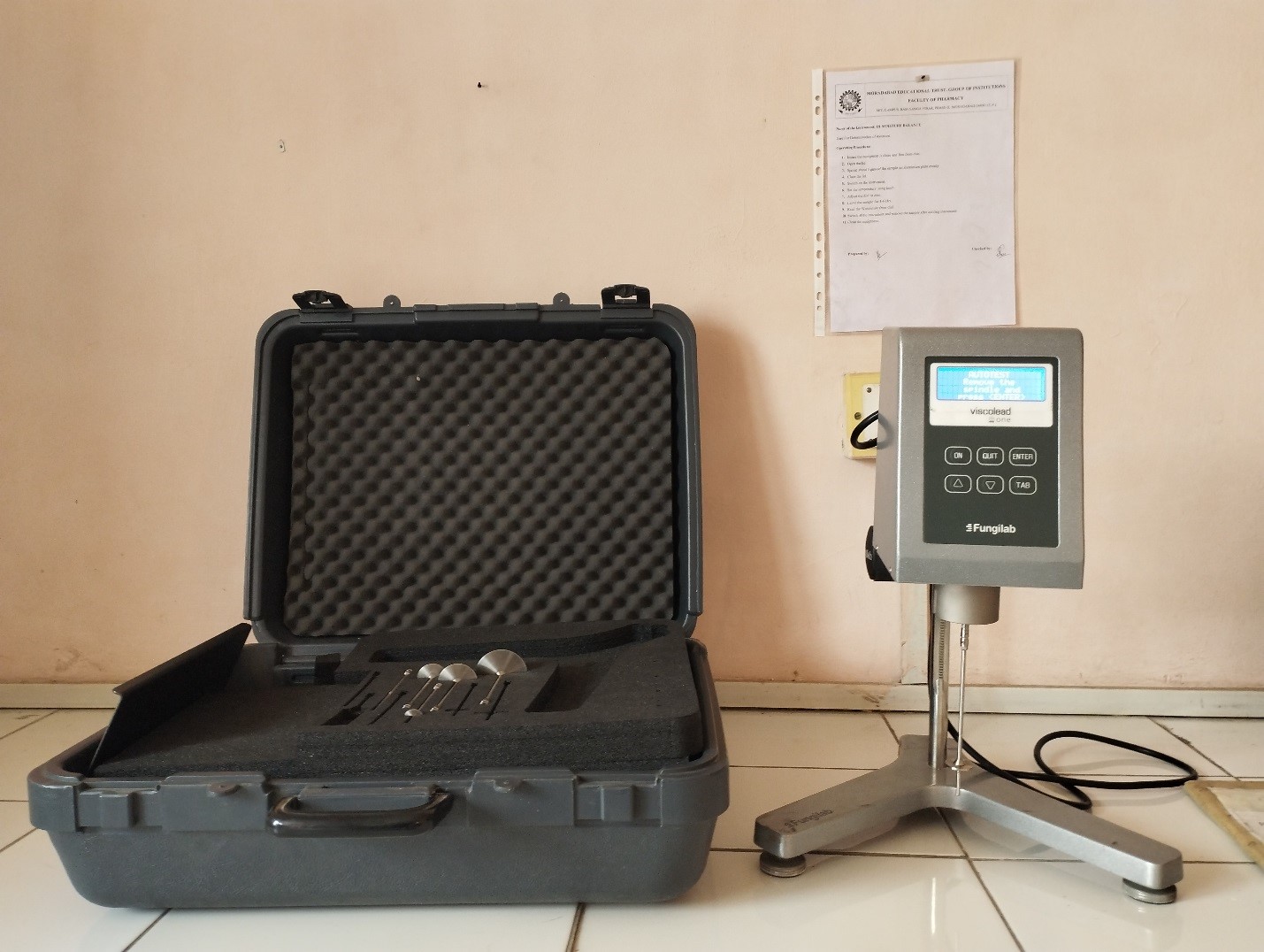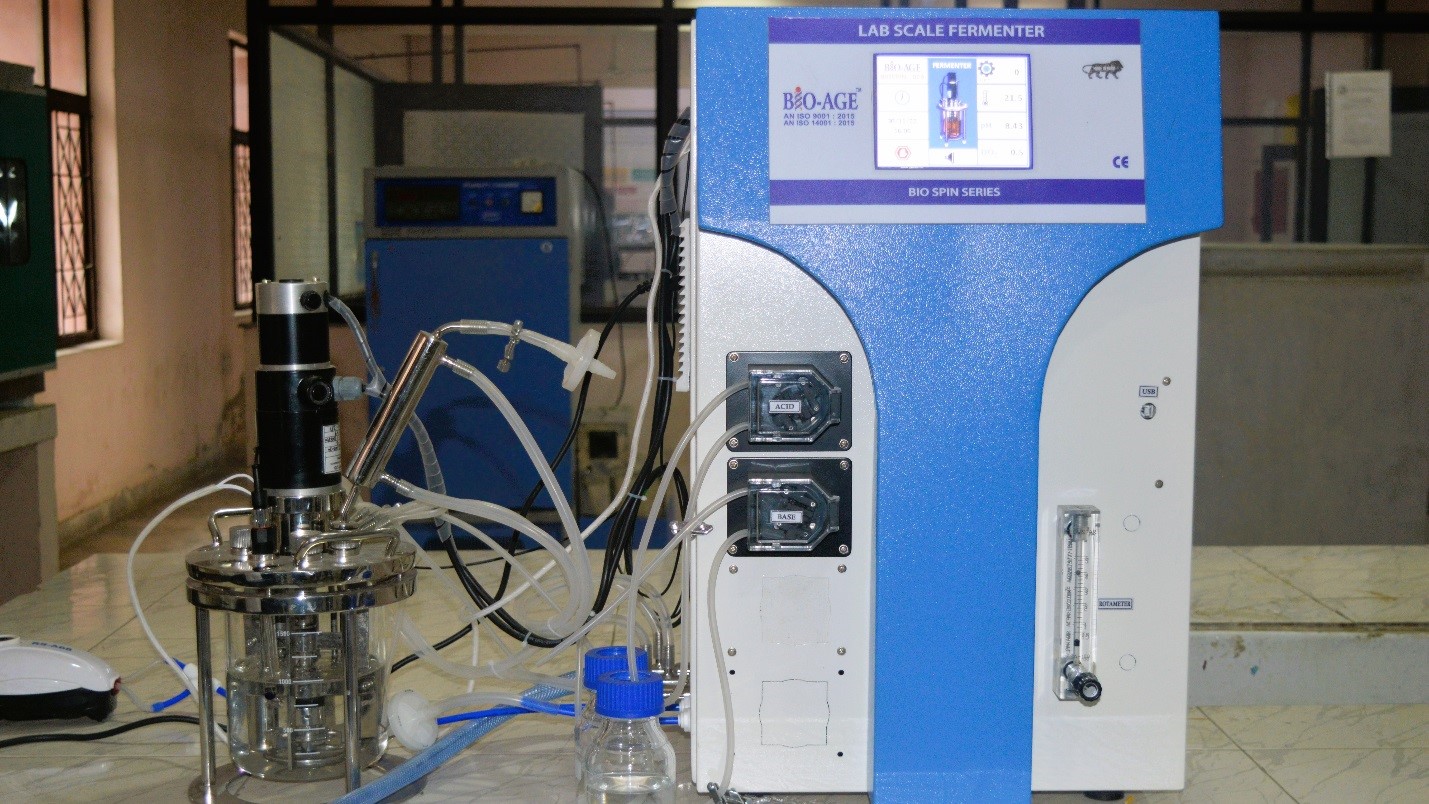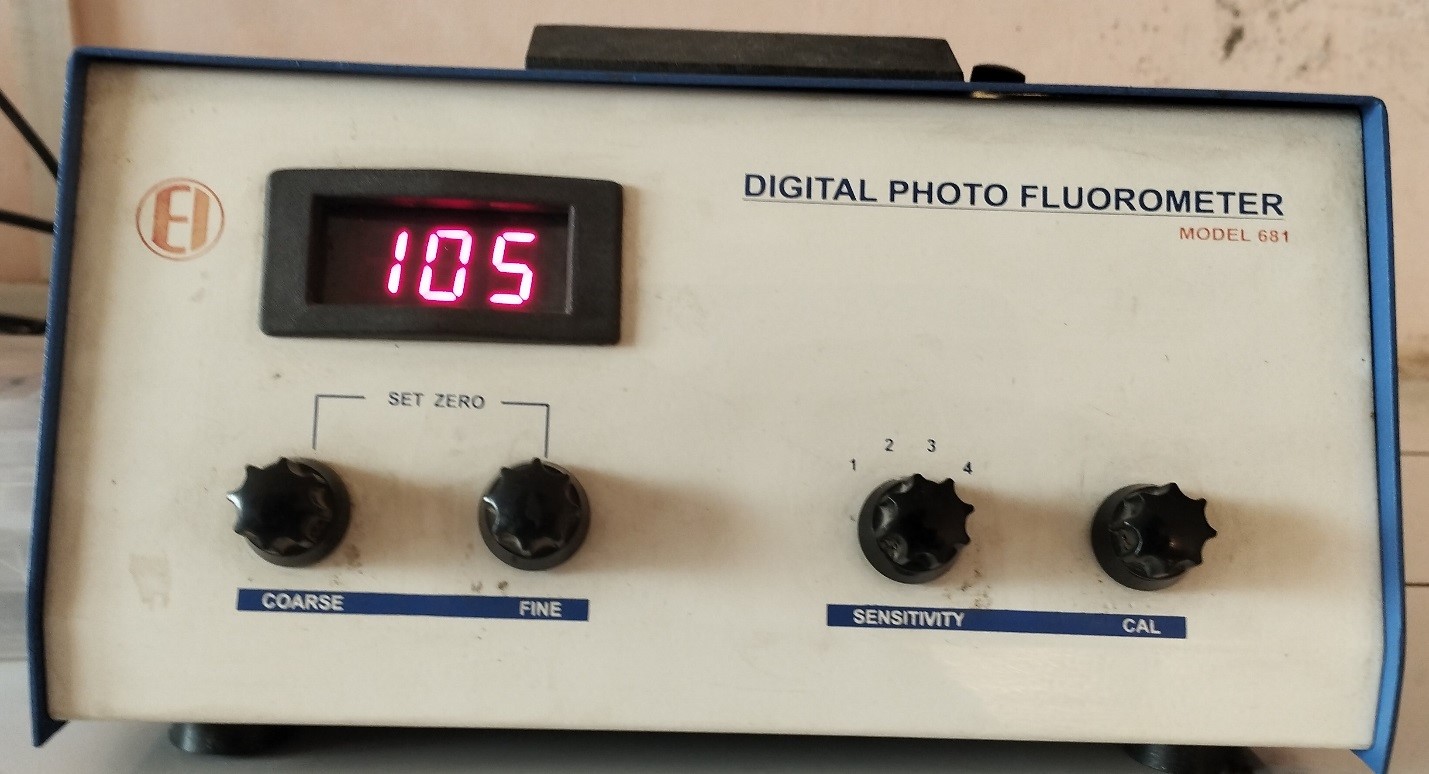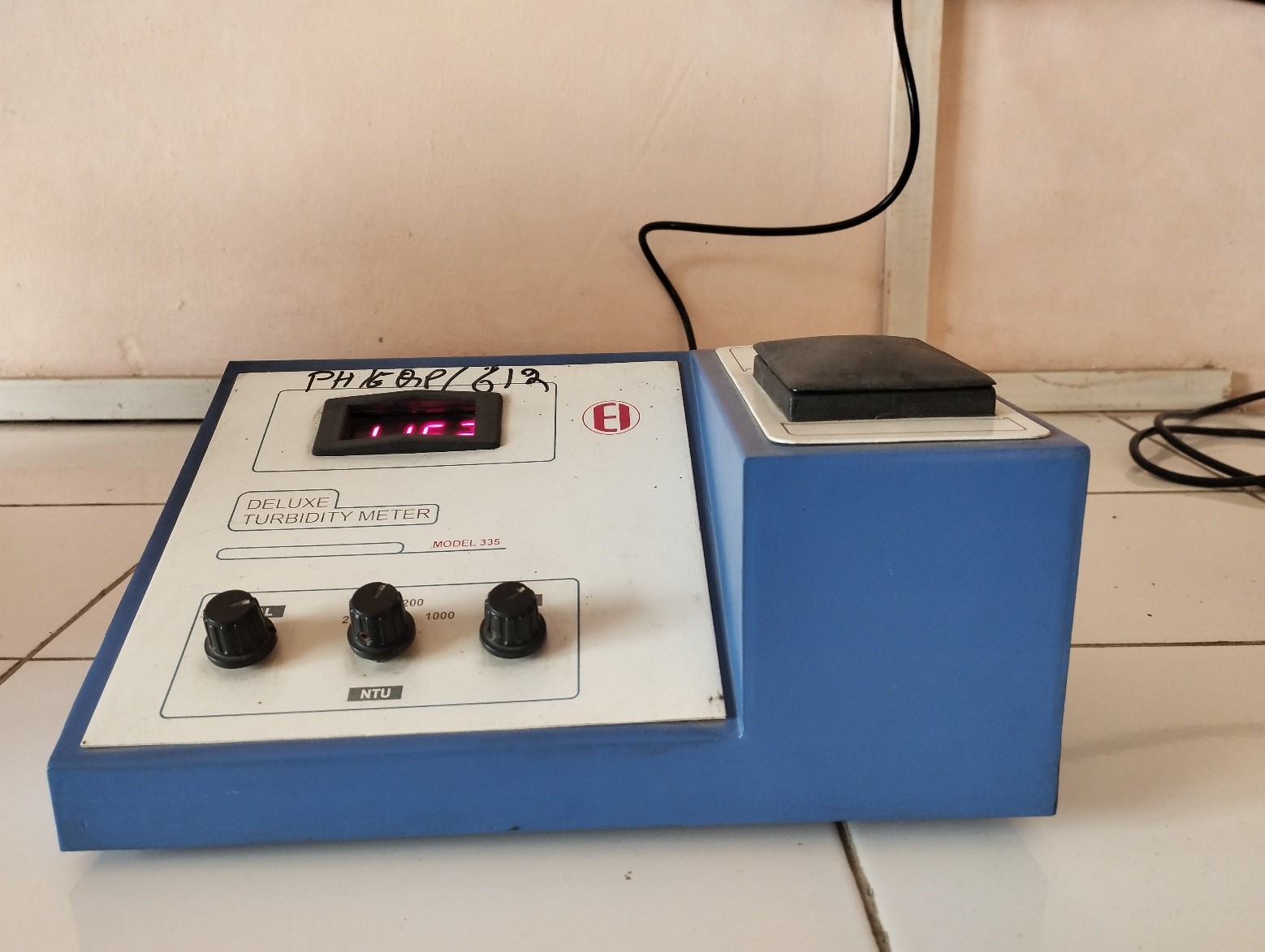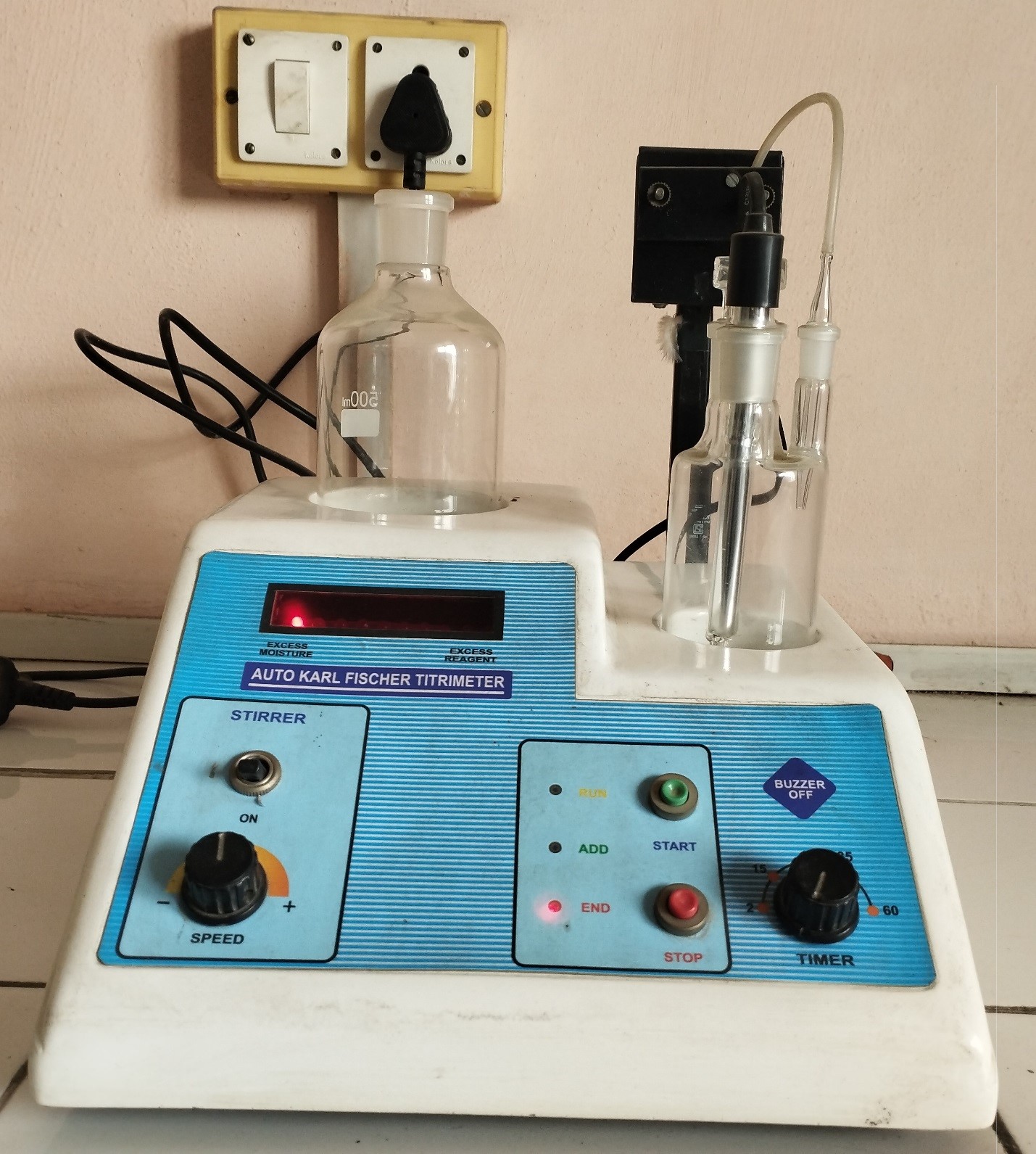Central Instrumentation Facility
Facilities
Central Instrumentation Facility
Excellence in pharmaceutical research and teaching, Institutions require modern innovative equipment, a variety of workshops, and support facilities. These tools and resources allow researchers, research associates, and students to perform internationally competitive research and development in basic and applied pharmaceutical science.
MET Faculty of Pharmacy-SIF promote research and development with the following objectives.
- To improve technical infrastructure so that sophisticated research in a variety of scientific fields may be done under one roof and so that academic departments and institute can use their services.
- To provide guidance for the acquisition of data and train personnel in the operation and maintenance of Sophisticated Instruments.
- To organize short-term courses/workshops on the use and application of various spectroscopic and analytical techniques for Ph.D. research scholars, UG and PG students, teachers, and technical personnel from various universities and colleges in the region.
SIF Team Members
Sophisticated Instrumentation Facilities Available
A. Fourier transform infrared (FT-IR) spectrophotometer
FT-IR is the most powerful tool for identifying types of chemical bonds (functional groups). The wavelength of light absorbed is characteristic of the chemical bond as can be seen in this annotated spectrum. It gives information on the vibrational and rotational modes of motion of a molecule and is hence an important technique for the identification and characterization of a functional group. The infrared spectrum of an organic compound provides a unique fingerprint, which is readily distinguished from the absorption patterns of all other compounds.
FT-IR imaging is a versatile complementary imaging tool and an analytical technique for spectrochemical imaging. The advantage of chemical imaging compared to other sensor technologies is the ability to analyze the spatial distribution of the component materials in blends, granules, or finished dosage forms.
FTIR extends many benefits:
- Higher sensitivity measurement
- Measures samples with low transmittance, a small sample size, or a thin layer of film on its surface.
- Higher speed measurement
- Higher wavenumber accuracy
- Highly accurate spectrum subtraction
Make and Model: Shimadzu Corporation Kyoto, Japan; IRAffinity-1S
Specifications / Features
B. High-Performance Liquid Chromatography (HPLC)
High Performance Liquid Chromatography (HPLC) is a form of column chromatography that pumps a sample mixture or analyte in a solvent (known as the mobile phase) at high pressure through a column with chromatographic packing material (stationary phase).it is used to separate a mixture of compounds in analytical chemistry and biochemistry so as to identify, quantify or purify the individual components of the mixture.
Make and Model: Systronics, Gujarat (India); SYS LC-138
Specifications / Features
SYS LC-138 adopted the trinity system of the column over, system controller, and solvent tray as a whole, which can reasonably use the space and enhanced the management of temperature and solvent.
Audit Trail
Conform to GLP/GMP, equivalent to 21CFR Part II standard.
Intuitive Software Control
The SYS LC-138 Liquid Chromatograph System adopts the most advanced liquid chromatography system called VI2010 HPLC Data Work Station, which designed for international standard, all the action of SYS LC-138 can be directly controlled by the computer. The control is designed with the dedicated keys that allow even a novice to turn on the pump and create methods. An easy to read data display allows the user to monitor several parameters from the same screen. When configured as a gradient HPLC system, user can program and store different methods, all the methods can be linked or run independently.
Easy maintenance
All user serviceable components are easily accessed from the front panel. Once the head assembly is removed, the pistons and seals can be replaced quickly and easily without the use of tools. The highest voltage of SYS LC 138 can be reached to 10000 psi, and the minimum detection limit is 1×10-9g/ml.
C. UV-Visible spectrophotometer
UV–visible spectrophotometry refers to absorption spectroscopy or reflectance spectroscopy in part of the ultraviolet and the full, adjacent visible regions of the electromagnetic spectrum. It is based on the absorption of ultraviolet light or visible light by chemical compounds, which results in the production of distinct spectra.
Make and Model: Shimadzu Corporation Kyoto, Japan; UV-1900i
Spectroscopy is based on the interaction between light and matter. When the matter absorbs the light, it undergoes excitation and de-excitation, resulting in the production of a spectrum. When matter absorbs ultraviolet radiation, the electrons present in it undergo excitation. This causes them to jump from a ground state (an energy state with a relatively small amount of energy associated with it) to an excited state (an energy state with a relatively large amount of energy associated with it). It is important to note that the difference in the energies of the ground state and the excited state of the electron is always equal to the amount of ultraviolet radiation or visible radiation absorbed by it.
Specifications / Features
- Easy to operate, obtain answer easily and rapidly
- Ergonomic hardware design
- Navigation tab improve usability
- Low stray light
- Ultra-fast scan
- High reproducibility and repeatability accuracy
Applications
This instruments widely used in following divisions:
- Food
- Pharmaceutical and Life sciences
- Chemistry
- Qualitative and quantitative Analysis
- Kinetics
- Protein/RNA/DNA quantification
- Metal Concentration
- Validation
D. Hematology analyzer (Cell counter)
Hematology analyzers are used to count and identify blood cells at high speed with accuracy. Hematology analyzers are used to conduct a complete blood count (CBC), which is usually the first test requested by physicians to determine a patients general health status. A complete blood count includes red blood cell (RBC), white blood cell (WBC), hemoglobin, and platelet counts, as well as hematocrit levels.
Other analyses include:
- RBC distribution width
- Mean corpuscular volume
- Mean corpuscular hemoglobin
- Mean corpuscular hemoglobin concentrations
- WBC differential count in percentage and absolute value
- Platelet distribution width
- Platelet mean volume
- Large platelet cell ratio
- Platelet criteria
Make and Model: Zybio, China; Hematology Z3 CRP
Specifications/Features: 23 Parameters +3 histograms
Principle: Impedance for WBC, RBC and PLT counting, Colorimetric for HGB, Immuno-turbidimetry for CRP
Sample Type: Venous blood, capillary blood and pre-diluted blood
Throughput: 70 samples/h for CBC mode, 60 samples/h for CBC + CRP mode
Reagent: Diluent, Lyse, Probe cleanser, CRP R1, CRP R2
Sample Volume: 10 μL for CBC mode, 15μL for CBC + CRP / CRP mode, 20 μL for PD mode
E. Brookfield Viscometer
Brookfield viscometers employ the principle of rotational viscometry – the torque required to turn an object, such as a spindle, in a fluid indicates the viscosity of the fluid. Torque is applied through a calibrated spring to a disk or bob spindle immersed in test fluid and the spring deflection measures the viscous drag of the fluid against the spindle. The amount of viscous drag is proportional to the amount of torque required to rotate the spindle, and thus to the viscosity of a Newtonian fluid.
In the case of non-Newtonian fluids, Brookfield viscosities measured under the same conditions (model, spindle, speed, temperature, time of test, container, and any other sample preparation procedures that may affect the behavior of the fluid) can be compared. When developing a new test method, trial and error is often necessary in order to determine the proper spindle and speeds. Successful test methods will deliver a % torque reading between 10 and 100. The rheological behavior of the test fluid can be observed using the same spindle at different speeds, but because the geometry of the fluid around a rotating bob or disk spindle in a large container does not allow a single shear rate to be assigned, proper rheometry is not feasible using this setup.
F. Laboratory scale fermenter (Bioreactor)
Bioreactors are devices that support a biologically active environment, allowing for the culture of live organisms. Variables such as temperature, nutrient content, pH, and oxygen can be carefully controlled within a bioreactor. Laboratory bioreactors are typically stainless steel or glass and vary by size, type of input, and mode of operation so it is important to consider application before purchasing a bioreactor.
Make and Model: Bio-Age Equipment & Services, Mohali, Punjab; Biospin-02A
Specifications / Features
G. Photo Fluorometer
A fluorometer is a device used to measure parameters of visible spectrum fluorescence: its intensity and wavelength distribution of emission spectrum after excitation by a certain spectrum of light. These parameters are used to identify the presence and the amount of specific molecules in a medium. Modern fluorometers are capable of detecting fluorescent molecule concentrations as low as 1 part per trillion.
It is designed for precise analysis of fluorophors such as vitamins, quinine, steroids, fluorescein, metal complexes, etc. The Fluorescence is caused by the absorption of radiant energy and the re-emission of some of its energy in the form of light.
In fluorescence, the excited molecule returns to the ground state immediately after excitation, when the fluorescent molecule is excited at the fixed wavelength (primary filter). The amount of light emitted is measured at the particular wavelength (secondary filter). Fluorometer method for the determination of fluorophors is more sensitive than the Colorimetric method.
The Primary Filters – Corning 5840 & Corning 5113 and secondary filters – Corning 4308, Corning 3486 and Corning 3385 mounted on holders are supplied with the instrument The fluorescence is collected at 90 degree angle to minimize the interference of excitation source to fall on the sample solution only during a measurement.
Make and Model: Electronics India, Haryana; model 681
Specifications / Features
H. Turbidimeter
Turbidity Meters are extremely useful for measurement of suspended solids in sewage water, ground water, potable water, soil analysis laboratories, fisheries, water quality control in boiler feed water, water works department, breweries, water purification plants, chemical & pharmaceutical industries, etc.
Clarity of water is extremely important in products destined for human consumption. Suspension free water is also considered necessary for industries manufacturing beverage, food products etc. Similarly, minimum limits of turbidity are required to be observed in drinking water & sewage disposals.
Ei’s Digital Turbidity Meter is ideal instruments for measurement of suspensions. It consist of a light source focused on a test tube containing the sample solution under test. The light, reflected at right angle to the focused light by the suspension in the solution, is detected by the photo electric detector, amplified and displayed on a 3½ digit LED display.
Make and Model: Electronics India, Haryana; model 335
Specifications / Features
I. Auto Karl-Fischer Titrimeter
Karl Fischer titration is a classic titration method in chemical analysis that uses coulometric or volumetric titration to determine trace amounts of water in a sample. The principle of Karl Fischer titration is based on the oxidation reaction between iodine and sulphur dioxide. Water reacts with iodine and sulphur dioxide to form sulphur trioxide and hydrogen iodide. An endpoint is reached when all the water is consumed.
Karl Fischer method for determination of moisture content is used in pharmaceutical and drug manufacturing industries, food stuff, sugar, wood, paper and textile industries, petroleum refineries, chemical and fertilizer units etc.
Make and Model: Electronics India, Haryana; model 761
Specifications / Features
CONTROL UNIT
TITRATION UNIT
J. Colorimeter
A colorimeter is a device used in colorimetry that measures the absorbance of particular wavelengths of light by a specific solution. It is commonly used to determine the concentration of a known solute in a given solution by the application of the Beer–Lambert law, which states that the concentration of a solute is proportional to the absorbance.
This instruments is extremely useful for quantitative estimation of several chemical substances including blood chemistries in chemical/clinical labs, pharmaceutical industries, medicine plants, water treatment plants, agriculture universities etc.
Make and Model: Electronics India, Haryana; model 312










